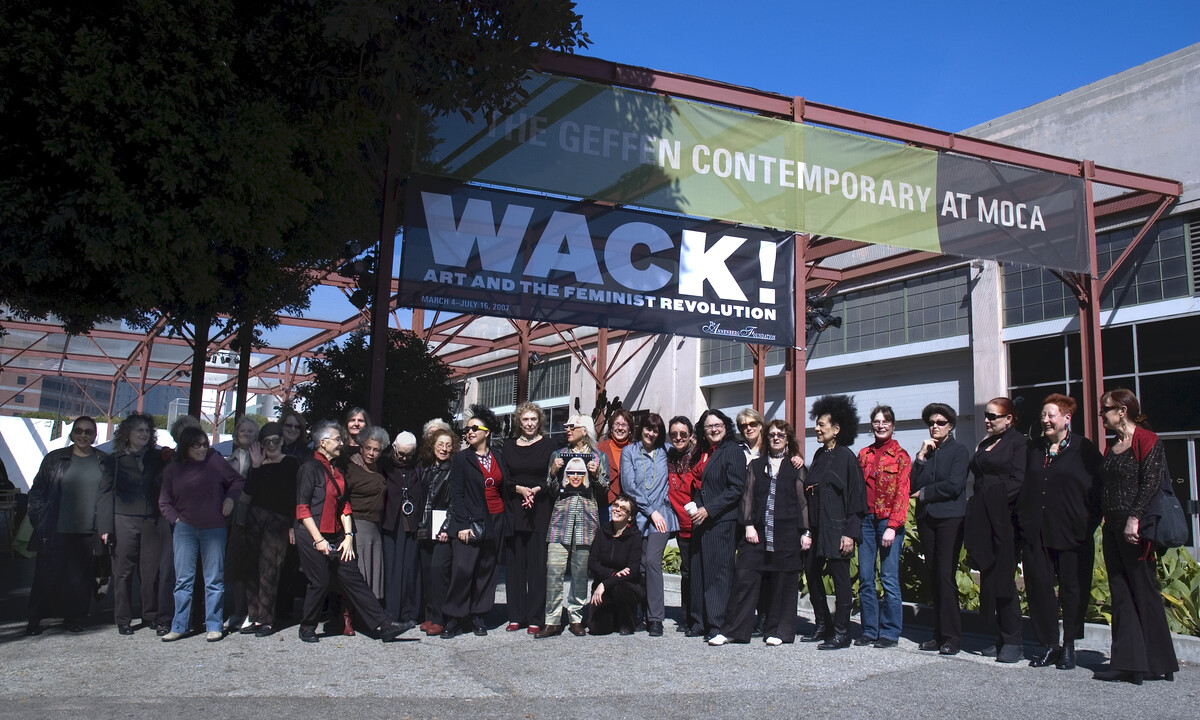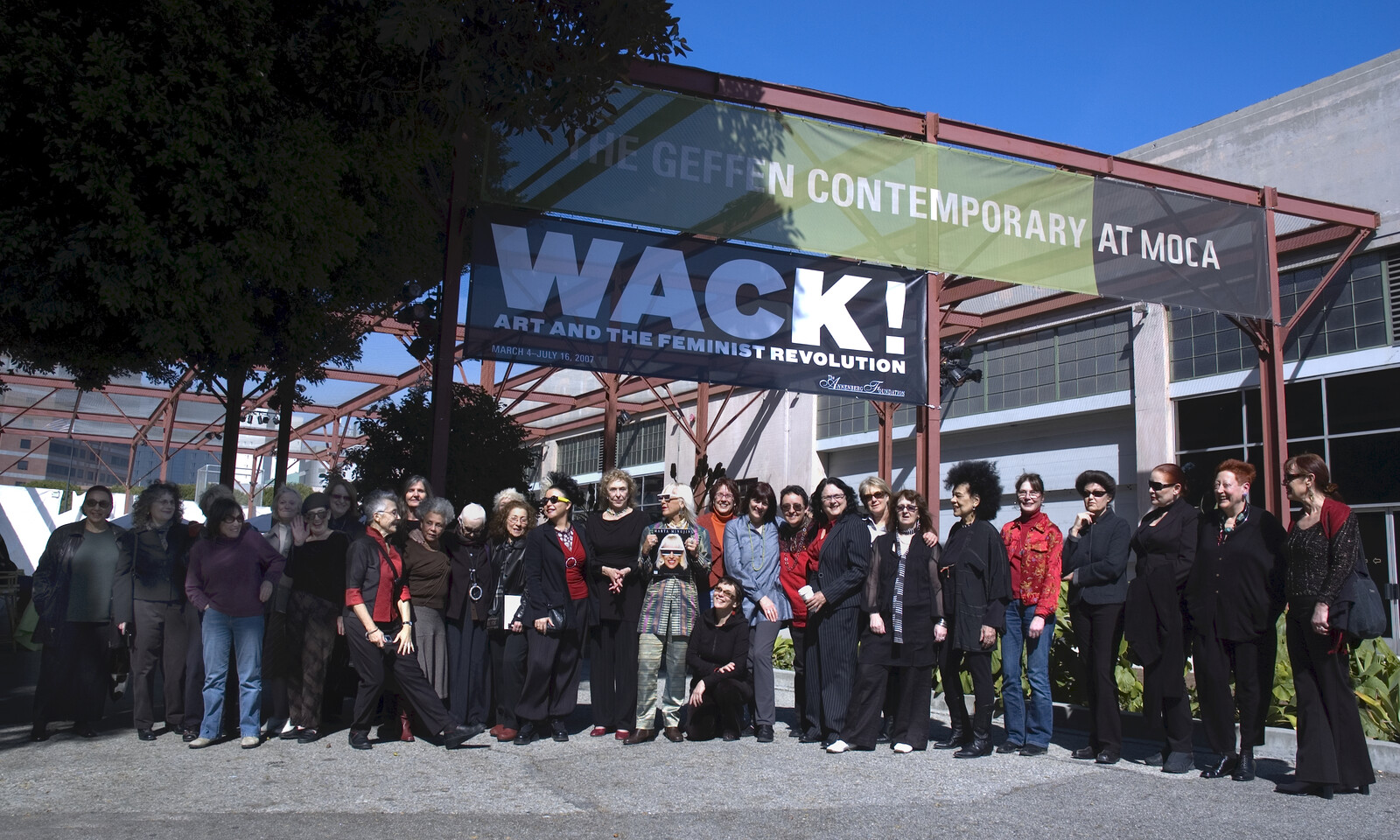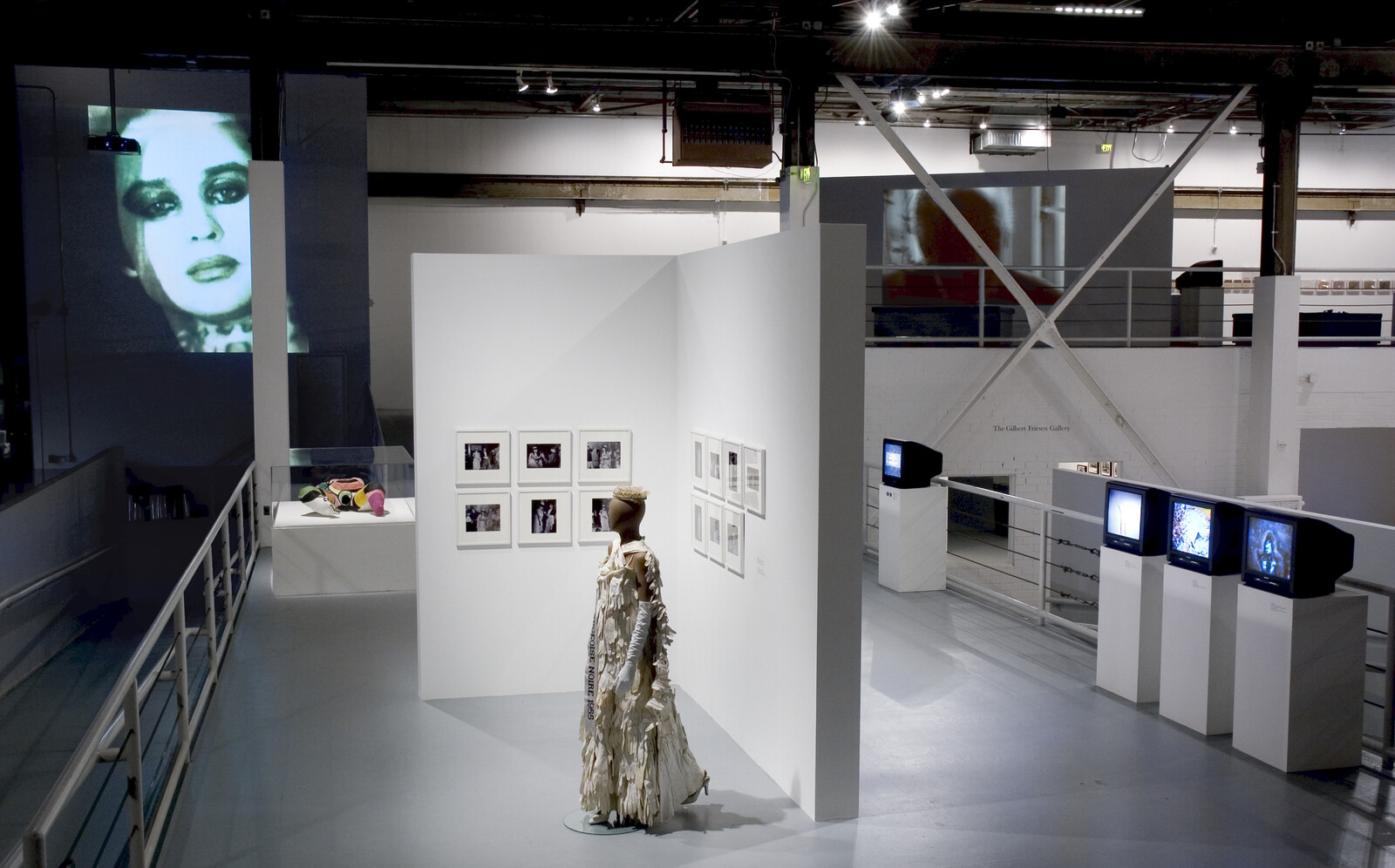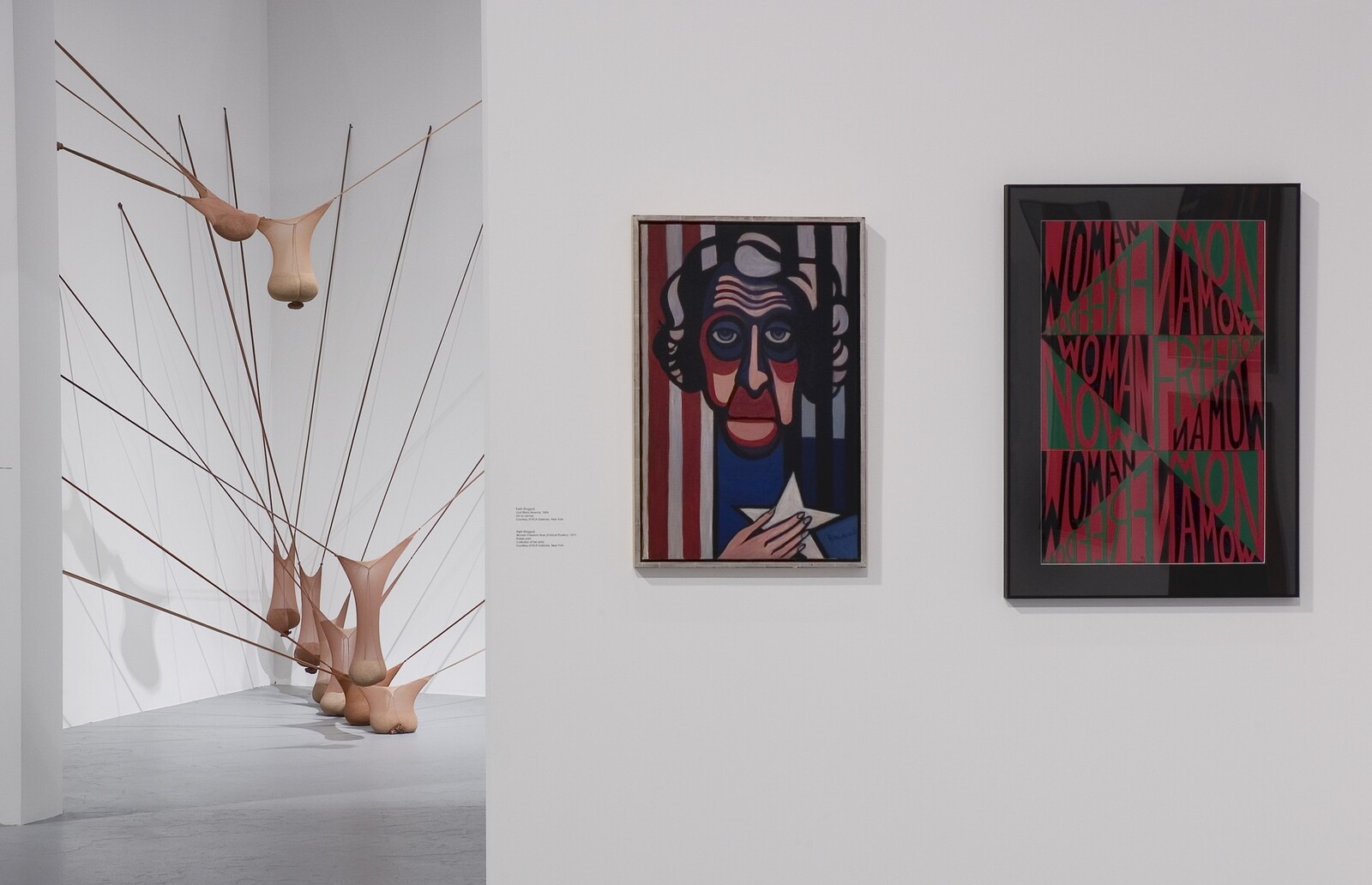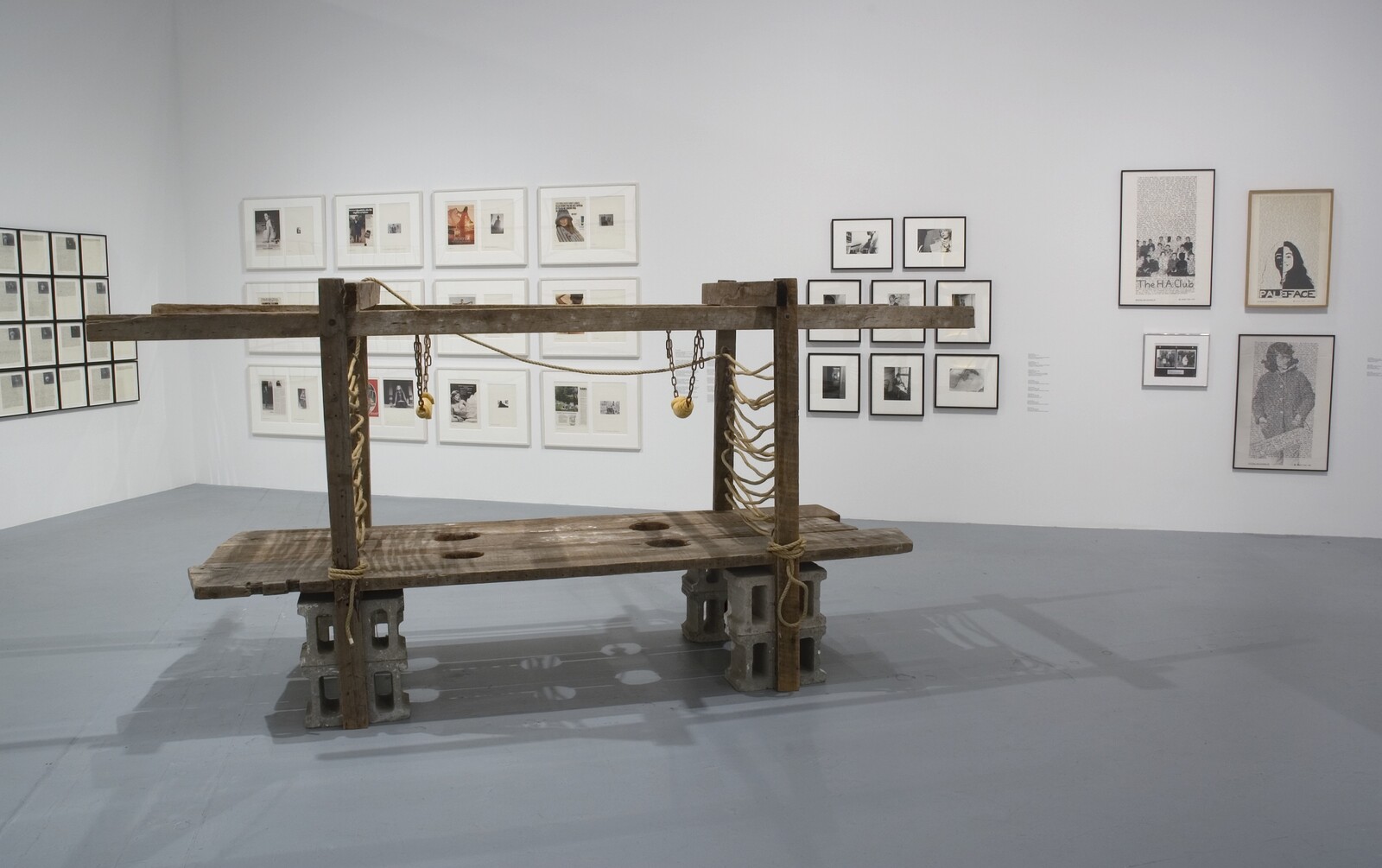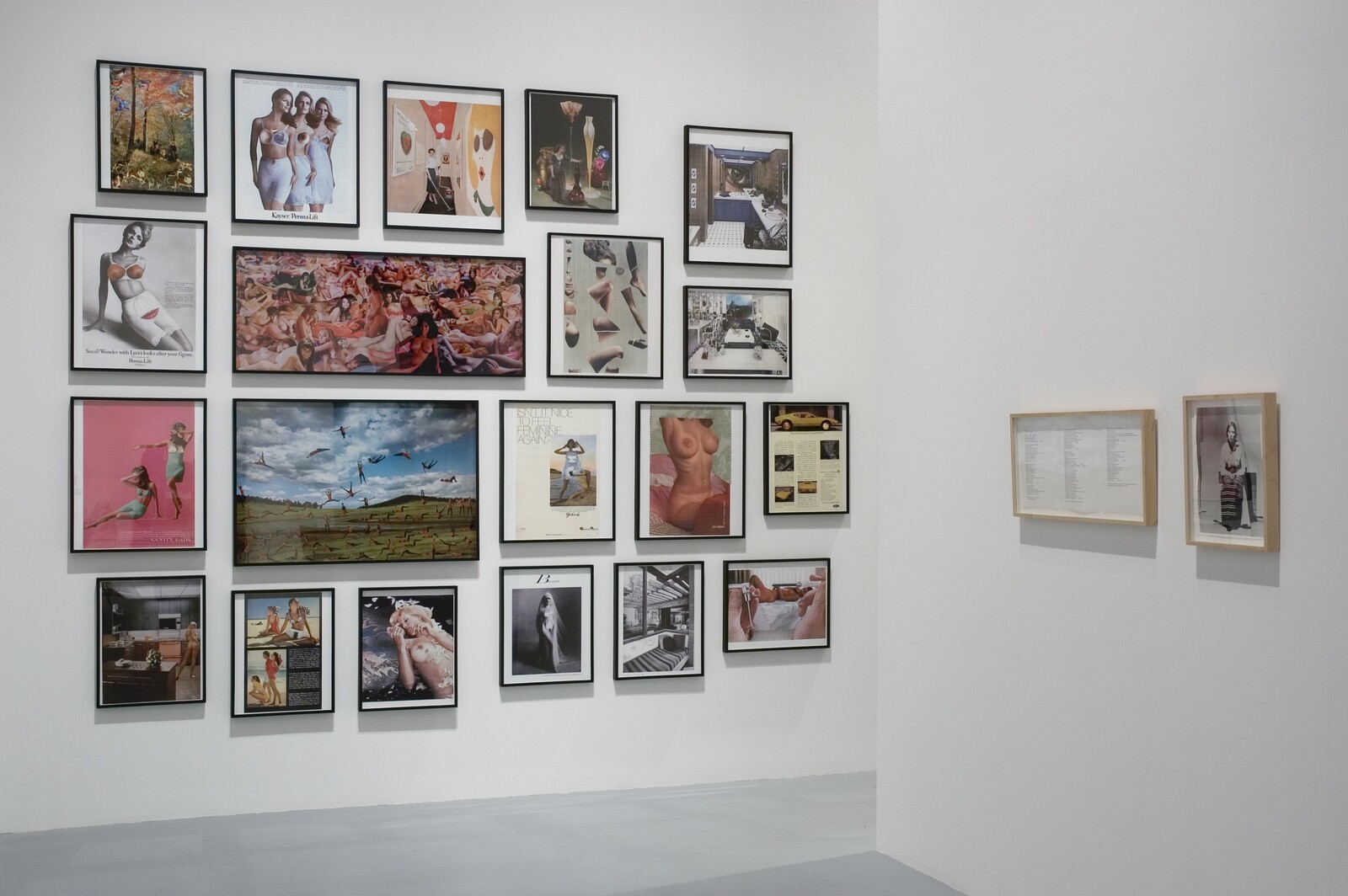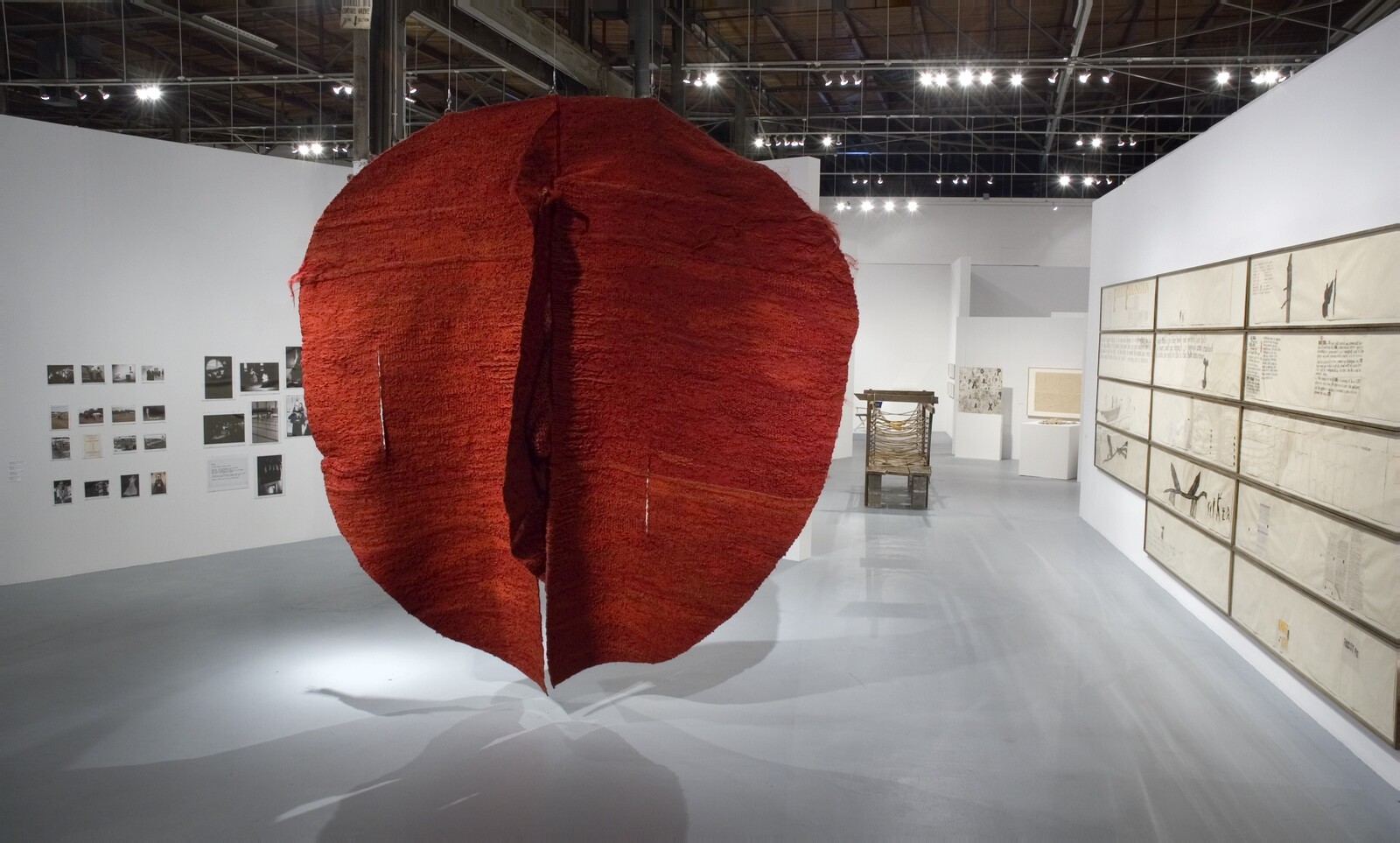The Rearview series addresses blind spots in contemporary art history by returning to an influential exhibition, work, or text from the past and reflecting on its relevance to the present. In this edition, Wendy Vogel considers how the 2007 touring exhibition “WACK! Art and the Feminist Revolution” marked a generational shift in art criticism.
Feminist art history may come to be defined as the era before and after WACK!. The onomatopoeic word—more a metaphorical whip-crack than a line in the sand—is shorthand for “WACK! Art and the Feminist Revolution,” an exhibition curated by Cornelia Butler that opened at the Museum of Contemporary Art, Los Angeles (MOCA) in March 2007. This pioneering institutional survey of feminist art brought together work made by more than 120 female artists and collectives between 1965 and 1980. In the introduction to the 500-plus-page exhibition catalogue, Butler stated her curatorial goals: “My ambition for ‘WACK!’ is to make the case that feminism’s impact on art of the 1970s constitutes the most influential international ‘movement’ of any during the postwar period—in spite or perhaps because of the fact that it never cohered, formally or critically, into a movement.”1 It remains a bold statement today; it was even bolder a decade and a half ago.
Six years into the presidency of George W. Bush, 2007 was an unlikely Year of the Woman in US contemporary art. If the political climate was conservative, the art market was at least fiscally liberal, the ascendant collector class’s attention having swung from the identity-focused discourse of the ’90s to Neo-Conceptual formalism, a Dave Hickey–inspired enthusiasm for beauty, and a new generation of skate-bro, bad-boy art. And yet, the institutional stars aligned for a major reconsideration of the radically confrontational, internally fractious, experimental modes of feminist art. In January 2007, the Museum of Modern Art (MoMA) in New York organized a landmark two-day symposium called “The Feminist Future.” That March, the Brooklyn Museum inaugurated their Elizabeth A. Sackler Center for Feminist Art with “Global Feminisms”—an exhibition featuring 88 living female artists from six continents, organized by the Sackler Center’s Maura Reilly and groundbreaking feminist art historian Linda Nochlin. “WACK!” opened the same month in LA. In tandem with these related events, “WACK!” was a historical blockbuster with a gravitational pull, drawing both audiences and critical attention.
Like any museum exhibition, it had its blind spots, acknowledged at the time by critics as well as its organizers. The single-curator perspective, its single-gender artist list, its overwhelming representation of white cis women—even its explicitly canonizing mission—all point to Eurocentric biases. Given the anti-racist activism of this past year, the omissions are even more glaring.
Yet I can’t overstate the impact of the show—and the open discussion it prompted about gender and cultural representation—on the most formative years of my twenties. At the time of MoMA’s “Feminist Futures” symposium, I was employed at the museum as a lowest-level assistant to a senior curator. When work was slow upstairs, I snuck away from my desk to watch a few of the sold-out talks. Standing in the back of the dark auditorium, I saw luminaries such as Cuban-American artist Coco Fusco (who was making work about female military interrogators) and the UK-based feminist theorist Griselda Pollock, and caught Nochlin’s fiery final address. In the Q&A periods afterwards, audience members asked spiky, critical questions, alternately bemoaning the museification of feminist art and their own lack of recognition in hallowed white cubes. I had identified with “the F word” from a young age, but a new understanding began to develop as a result of these talks. Far from being enshrined in history as a movement with all the seriousness it was due, feminism remained contested ground that required ongoing commitment and solidarity from artists and activists alike.
“WACK!” was a wake-up call to my Millennial peer group, who came of age at the nadir of international activism. Butler, the show’s curator, saw her approach to the task as being informed by her own generational position and political engagements. Too young to participate in ’70s feminism, she earned her bona fides in the early ’90s, when direct action groups such as the Women’s Action Coalition (WAC) emerged—an artist-led, feminist alliance partly inspired by the activism of AIDS Coalition to Unleash Power (ACT UP). The exhibition’s title paid oblique homage to organized groups such as WAC, as well as ’60s-era associations like the Art Workers Coalition (AWC), and Women Artists in Revolution (WAR). “Unlike the current generation of twenty-something women coming out of graduate programs and into the professional world,” a perplexed Butler wrote, “for me the nomenclature of feminism has never been an issue or a problem.”2
I was aware of the handwringing directed at women my age by some second-wave feminists, even if I had never seen feminism itself as a problem. But as someone whose birth coincided with the early ’80s post-feminist backlash, I’d come to recognize “essentialist” as an epithet, to naturalize the tortured perspectives of those who would separate a personal feminist identity from ideology, and to listen to arguments that would pit queer fluidity against the stakes of earlier liberation movements.
By the time “WACK!” opened at New York’s MoMA PS1 in February 2008, the third stop on its multi-city tour, I was rounding the bend of my first year of graduate school at the Center for Curatorial Studies at Bard College. Despite following coverage of the exhibition for a year, I was happily overwhelmed by the power and playfulness of the show itself. I even have a record of my impressions, in the form of an assignment for a writing class. “Art is the product of a creative irritation,” I began, paraphrasing the enfant terrible of No Wave, Lydia Lunch (not featured in the show). There is a strange disjuncture between my understanding of feminist art as an outpouring of frustration, and my formal analysis. I highlighted works that still give me a charge today: collages of war and cosmetic imagery from Martha Rosler’s series “Body Beautiful, or Beauty Knows No Pain” (1966–72); Howardena Pindell’s confessional video about racism, Free, White and 21 (1980); Barbara Hammer’s lesbian erotic films; Argentine artist Marta Minujín’s mattress installation The Soft Gallery (1973). I measured such work against “unfashionable” central-core imagery by Judy Chicago or craft-based aesthetics, deciding that the show’s success lay in its pairing of the conceptual and abstract with second-wave feminists’ frank sexual embodiment, their messy championing of process, their reclamation of the gleeful and the girlish. This show also seeded in me a hope that feminist values, as well as aesthetics, might also be taken up by the institution—but we know the truth of how that has played out.
Looking back now, after 14 years, I marvel at the gaps in the show and its reception. While nearly every major review mentions the show’s all-women mandate—the subject of a catalogue essay by art historian Jenni Sorkin, who argued that women-only exhibitions, events, and publications constituted a type of political activism—the haphazard racial and sexual diversity metrics merit less notice. Only six Black women artists are featured in the show; Latinx, First Nations, and Asian women fare hardly better; queer and lesbian women are included, but the categories of trans and non-binary women are not addressed. Catalogue contributions by Valerie Smith, on Black Liberation’s intersection with Women’s Lib, and Marsha Meskimmon, about the colonialist definitions of cultural centers and periphery, lay productive groundwork for future shows. Indeed, important exhibitions in the past decade have attempted to fill these lacunae. Two were mounted in 2017, the ten-year anniversary of “WACK!”: “We Wanted a Revolution: Black Radical Women, 1965–85,” curated by Catherine Morris and Rujeko Hockley for the Brooklyn Museum, and “Radical Women: Latin American Art, 1960–1985,” organized by Cecilia Fajardo-Hill and Andrea Giunta for the UCLA Hammer Museum (where Butler is now chief curator.)
The biggest difference between now and then is the booming market for feminist art, and its resultant glamorization in mainstream media—or is that vice versa? Back in 2007, to be blunt, old feminists weren’t seen as cool. For a temperature check, revisit the arbiter of early-2000s art-world cool: Artforum’s online “Diary” column. The magazine sent a correspondent to the opening of “WACK!” in LA, and his blurry, casual snapshots of artists (Martha Rosler with her eyes closed, Judy Chicago smiling into a startling flash that gives her skin a fluorescent cast) punctuate a breezy text, in which he likens the vernissage atmosphere to a high school reunion and admits that neither he nor Carolee Schneemann understood the exhibition title.3 If such a survey were mounted today, the older artists (those who are still alive) would get the full Vogue glow-up treatment. On social media, slick copy would accompany tagged selfies in front of artworks. Feminism has been fully branded as part of contemporary capitalism; so too have many artworks of its most fertile period, though artists themselves have unevenly reaped the benefits.
In Artforum’s digital archive, “WACK!” appears in forty-odd articles, mostly in coverage of participating artists who were “rediscovered” after the show. These reappraised works span the gamut of materials and subject matter: the BDSM-inspired masks of Nancy Grossman; the figurative paintings, especially the male nudes, of Sylvia Sleigh; the short career of sculptor Ree Morton, whose style evolved from earthy postminimalism to installations monumentalizing the sentimental rites of daily life; and the multihyphenate Mary Beth Edelson, a proponent of so-called Goddess Feminism. Of Edelson, writer Dodie Bellamy lamented: “Not enough recognition, and what comes is too late—this is the typical career path of radical feminist artists, especially those whose work focuses on sexuality and the body.”4 I think of Ana Mendieta here, as well as too many others whose work only received its due posthumously.
I’ve come to believe that rather than bury the bad (or imperfect) objects of art history, such critical excavations—of art, of exhibitions, and even of one’s own practice—should happen more regularly. In fact, I remember the article I wrote about “WACK!” during my school days as including a sentence that isn’t there: “This is the first time, but not the last, that I’ll be writing about this show.” The implication was that there would be revisions in perspectives, coinciding with personal and political upheavals. The past year has brought plenty of both.
In 2007 Lucy Lippard wrote a speech that she delivered at the MoMA symposium and again, in revised form, during the “WACK!” exhibition. In it, she extols the stubborn staying power of revolutionary thinking. It might change its political target—from reproductive rights to ecological activism, for example—but the tenets of such political awakening stay the same. “When I first became a feminist 37 years ago, I compared it to jumping off a bridge and wondering halfway down if this was such a good idea. But there aren’t a lot of recovering, post-feminist artworkers from that period, if there are any. Feminism changed lives and they usually stayed that way.”5 From the vantage point of the present, it would be easy to identify flaws in second-wave women’s liberation, and to see it as a movement that championed entitlement at the expense of solidarity. Harder is the transitive work, to use bell hooks’s term, of the feminist movement—a forward momentum, but also a backward looking, which understands that progress doesn’t always move in a straight line.
Cornelia Butler, “Art and Feminism: An Ideology of Shifting Criteria,” WACK! Art and the Feminist Revolution, ed. Cornelia Butler and Lisa Gabrielle Mack (Los Angeles: Museum of Contemporary Art; London: MIT Press, 2007), 15.
Ibid, 17.
Andrew Berardini, “Wack Pack,” Artforum, 2007: https://www.artforum.com/diary/andrew-berardini-on-wack-at-moca-12869.
Dodie Bellamy, “The Endangered Unruly,” Artforum, May 2019, accessed online: https://www.artforum.com/print/201905/dodie-bellamy-on-the-art-of-mary-beth-edelson-79527.
Lucy Lippard, “Issues and Commentary: No Regrets,” Art in America, June/July 2007, 75.
